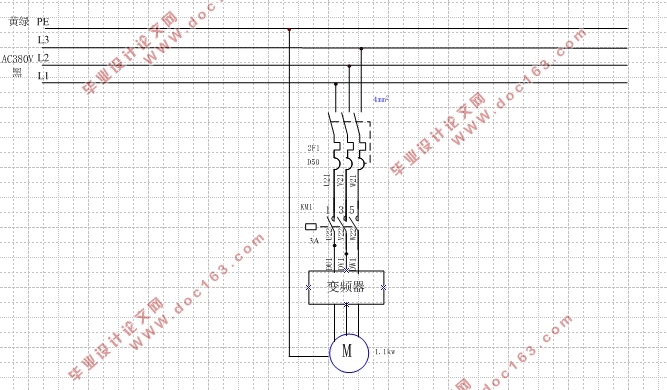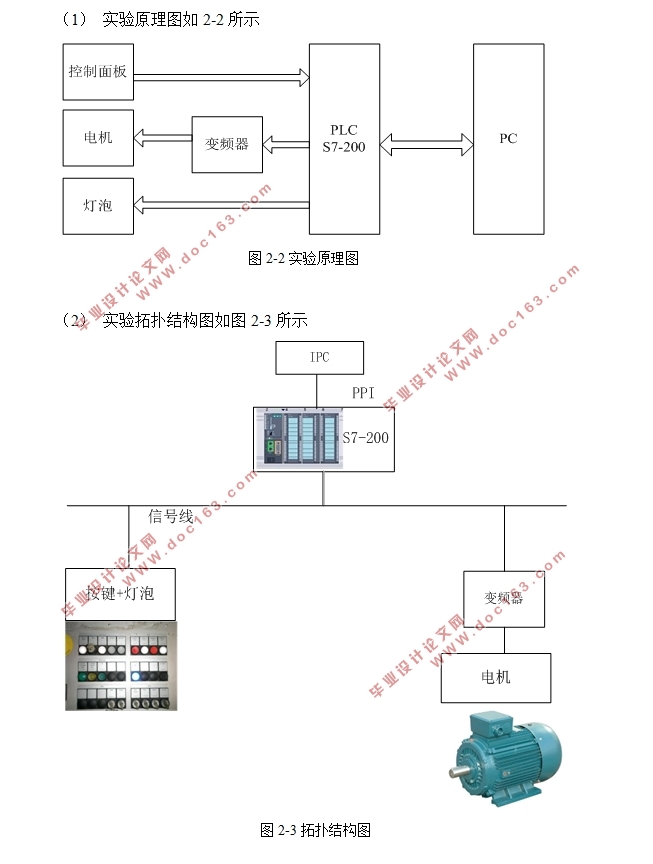电力拖动课PLC实验系统设计

1.无需注册登录,支付后按照提示操作即可获取该资料.
2.资料以网页介绍的为准,下载后不会有水印.资料仅供学习参考之用.
密 惠 保
电力拖动课PLC实验系统设计(论文15600字)
摘 要
在人类对自然界规律的探索和认识过程中,科学实验是必不可少的一个重要环节,可以说没有实验也就没有现代科学。因而现代可编程序控制器教学不只是单纯教授学生理论知识,更应加强学生实际动手能力的锻炼。
基于此,本课题是在实验箱基础上开发电力拖动课PLC自动控制综合实验系统,工作台上配有主机,可编程序控制器通过与上位机接口联网。实现用交流接触器、继电器、指示灯或实物模拟被控对象,模拟工业控制现场。
可编程序控制器原理及应用课程的特点是可编程序控制器原理部分内容较抽象,应用部分与生产实践紧密结合,实践性教学环节占有较大的比重。通过实践性教学环节,学生不仅可以加强对可编程序控制器理论的理解,而且也掌握了先进的控制技术,达到更好的教学效果。
关键词:PLC 实验教学 测控系统
Abstract
The laws of nature in the human exploration and understanding of the process, is essential for scientific experiments an important part, we can say no there is no modern experimental science. Thus the teaching of modern programmable controller is not simply to teach students theoretical knowledge, but should strengthen students' practical ability to exercise. [资料来源:www.THINK58.com]
Based on this, the subject is developed on the basis of the experimental box PLC automatic control electric drive class integrated experimental system, with a host table, programmable logic controller interfaces with the host computer through the network. Implemented by AC contactors, relays, lights or physical simulation of the controlled object to simulate industrial control field.
Features Programmable Logic Controller Principles and Applications course is part of the programmable controller more abstract principle, the application of part of the production practices closely, practical teaching occupies a large proportion. Through practical teaching, students can not only enhance the understanding of the theory of programmable controllers, but also mastered the advanced control technology to achieve better teaching results.
Key words: PLC;experimental teaching ;measurement and control system
[来源:http://www.think58.com]


目录
摘 要 I
第一章 综述 - 1 -
1.1研究背景 - 1 -
1.2国内外现状和发展趋势 - 1 -
1.3课题内容 - 3 -
1.3.1研究方法 - 3 -
1.3.2研究路线 - 4 -
第二章 实验台控制系统方案论证 - 5 -
2.1控制面板功能分析 - 5 -
2.2测控方案的确定 - 7 -
2.2.1基于单片机数据采集系统 - 7 -
2.2.2基于IPC与PLC的测控系统 - 7 - [资料来源:www.THINK58.com]
2.2.3基于智能仪表的测控系统 - 8 -
2.3总线分析 - 9 -
2.4本系统总体设计 - 11 -
第三章 硬件部分的设计 - 13 -
3.1硬件电路功能分析 - 14 -
3.1.1电机功能分析 - 14 -
3.1.2中间继电器功能分析 - 14 -
3.1.3交流接触器功能分析 - 14 -
3.1.4变频器 - 15 -
3.1.5开关功能分析 - 15 -
3.1.6熔断器功能分析 - 15 -
3.2硬件电路的设计 - 16 -
3.3控制系统的选型 - 18 -
3.3电气元件的选型 - 19 -
3.3.1变频器 - 19 -
3.3.2中间继电器 - 20 -
3.3.3交流接触器 - 22 -
3.3.4电机 - 23 -
3.3.5熔断器 - 25 -
3.3.6总线电缆 - 26 -
3.4控制面板电路设计 - 27 -
结语 - 30 -
